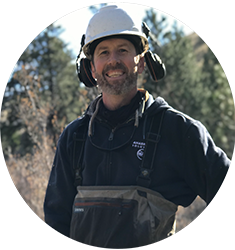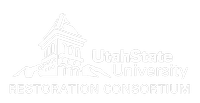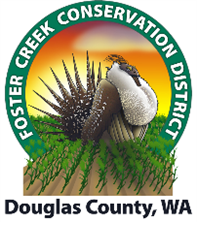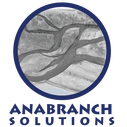Foster Creek 2021: Field-Based Workshop: Intro to Low-Tech Process-Based Restoration of Riverscapes
Taught for Foster Creek Conservation District
September 29 & 30, 2021 in Bridgeport, WA
In this 2 day workshop, you will be introduced to principles of healthy riverscapes and principles of riverscape restoration.
Description
This two-day field-based workshop will take place in the Foster Creek watershed near Bridgeport, WA and is intended to introduce resource managers, land-owners, and conservation groups to ‘low-tech’ process-based (LTPBR) approaches for restoring streams and their associated riparian areas (riverscapes) to benefit fish, wildlife, and working lands. Participants will learn principles guiding low-tech process-based restoration, become familiar with basic beaver ecology, and different types of low-tech structures, including Beaver Dam Analogues (BDAs) and Post-Assisted Log Structures (PALS). The focus of the workshop will be on the guiding principles, the construction of different low-tech structures, and the impairments the structures can treat. Aspects of low-tech planning, assessment, design, and permitting will not be discussed in detail.
Because the course will be taught in the field, it will be helpful to refer to some online resources prior to the workshop.. We will have hard copies of the Design Manual and the Pocket Guide, available for workshop participants at no cost. An online lecture series can be viewed either as videos or pdf documents. We encourage workshop participants to review some of the lecture material before the workshop. We will update the website with pictures and other information after the workshop.
Location
The workshop will be held in the field throughout the Foster Creek drainage and will be meeting at the Willow Flat Recreation Area on the morning of day 1. If weather is miserable, we will conduct the morning session of day 1 at Chief Joseph Dam. See the agenda for specific locations of where we will be meeting and stopping each day. The following links provide workshop meeting and stopping locations in the map below. Also availble as a .kmz and google map link.
How to Sign Up
To register, please contact the Foster Creek Conservation District by phone at (509) 888-6372 or Ryan Lefler by email at rlefler@fostercreekcd.org. For meal planning, please let us know if you have any dietary restrictions or preferences and whether you will be attending dinner on day 1.
What to Bring
- Closed toe footwear
- Wading boots or waders
- Water, Sun protection
- PPE (ear protection, work gloves, eye protection, hard hat)
- Some PPE will also be available on-site for work on day 2
- Lawn chair
COVID-19 Precautions
During the workshop, please follow state, local, and employer guidelines for social distancing and wearing masks.
What Will Be Provided
- LTPBR Manual and Pocket Guide
- Restoration Tools (shovels, buckets, post pounder) and extra safety gear
- Coffee and snacks will be provided by the Foster Creek Conservation District
- Lunch and bottled water will be provided both days by Pheasants Forever
- Dinner on Wednesday night at the Willow Flats Recreation Site will be provided by Conservation Northwest
Agenda
Wednesday, September 29, 2021
Meeting Location/Stop 1– Willow Flats Recreation Area (Upstream of Chief Joseph Dam on the south side of the Columbia R.)
9:00-9:50: Introductions, Agenda, & Goals of Workshop
Introductions, Goals, Agenda, and Logistics
- Introductions
- Goals/Agenda/Logistics – hand-outs
9:50-10:20: Background and Purpose (Pocket Guide p. 5, Design Manual Ch.1)
Scope of Problem
- General degradation
- Loss and importance of structure (beavers and wood)
- Define process-based restoration (contrast with traditional)
10:20-10:30: Break
10:30-11:00: Guiding Principles (Pocket Guide p. 1, Design Manual Ch.2)
Riverscape Principles
Restoration Principles
11:00-12:00: Low-tech Structures (Pocket Guide p. 23 & 55)
Low-tech toolbox – introduction to structures
Build your first Beaver Dam Analogue or PALS exercise
- Parking lot BDA exercise
12:00-1:00: Lunch & Travel to Stop 2
Stop 2– K Road/Mary Jane Hill Road along Highway 17
1:00-3:00: The Good, the Bad, and the Ugly Learning from beaver
- Beaver ecology and management Example of Low-tech Implementation
- FCCD goals and design Connecting Observations with goals and objectives
- Uncertainty - Adaptive Management and Expectation Management
- Things to think about (hydrology, geology, sediment supply, confinement, riparian, other)
- Reading riverscapes - Valley Bottom, Recovery Potential, Risk Assessment
3:00-3:30: Break & Travel to Stop 3
Stop 3 – Smith Draw (tributary to W. Foster Creek near Bridgeport Hill Road)
3:30-4:30: Put it all into practice; Observations, Goals, Design Options
Review/discussion upper, mid, and lower (headcut site) portions of property
4:30-5:00 Travel to Willow Flats Recreation Area
Stop 4 – Dinner and a Presentation: Willow Flats Recreation Area
5:00-7:00: Science behind Low-tech process-based restoration
- Case-studies of riparian & beaver management, and low-tech structure projects
Thursday, September 30, 2021
Meeting Location/Stop 1 - Bridgeport Chevron (Highway 17 and Foster Creek Ave.)
8:00-8:15: Day 2 Agenda and Carpool to Construction Site
Stop 2 – Peaceful Valley (4 miles south of Bridgeport on Highway 17)
8:30-12:00: Design and Construction (Pocket Guide p. 23-48, Design Manual Ch. 6)
- Review existing structures and safety and equipment operation demo
- Design and hands-on construction of various structures
12:00-1:00: Lunch and Travel to Stop 3
Stop 3 – Terry Hayes Road (12 miles south of Bridgeport on Highway 17)
1:00-3:45: Design and Construction (Pocket Guide p. 23-48, Design Manual Ch. 6)
- Design and hands-on construction of various structures
3:45-4:30: Workshop Synthesis
- Workshop recap
- Permits, resources, materials/logistics, costs, questions
Course Materials
Workshop Textbooks
For the workshops, we will rely on the new Design Manual and the Pocket Guide, which are both available free digitally. A hard copy of both will be provided to you in person at the workshop.
Workshop Lectures
Thanks to the generous support of the Natural Resource Conservation Service’s Working Lands for Wildlife, and a grant through Pheasants Forever to Utah State University’s Restoration Consortium and Joe Wheaton’s ET-AL lab are able to deliver a free virtual workshops to NRCS conservationists and their partners. This series was envisioned by Jeremy Maestas (NRCS) and is possible thanks to partner matches by various local organizations in each state and matching funds from Utah State University. This grew out of the successful 2016 Enhancing Mesic Habitat Resilience in Sagebrush Ecosystems Workshop at Utah State University and the 2018 and 2019 workshop series.
The latest iteration of these is a lecture series designed to be presented virtually over five days. The link below provides access to all the lectures on each aspect of low-tech PBR (e.g., planning and assessment, design, implementation) in video and pdf format. These resources will provide more detailed information and links to scientific literature than can be delivered in field-based format.
Instruction Team

Stephen N. Bennett
Principal Fish & Wildlife Biologist, Anabranch Solutions Research Scientist, USU







